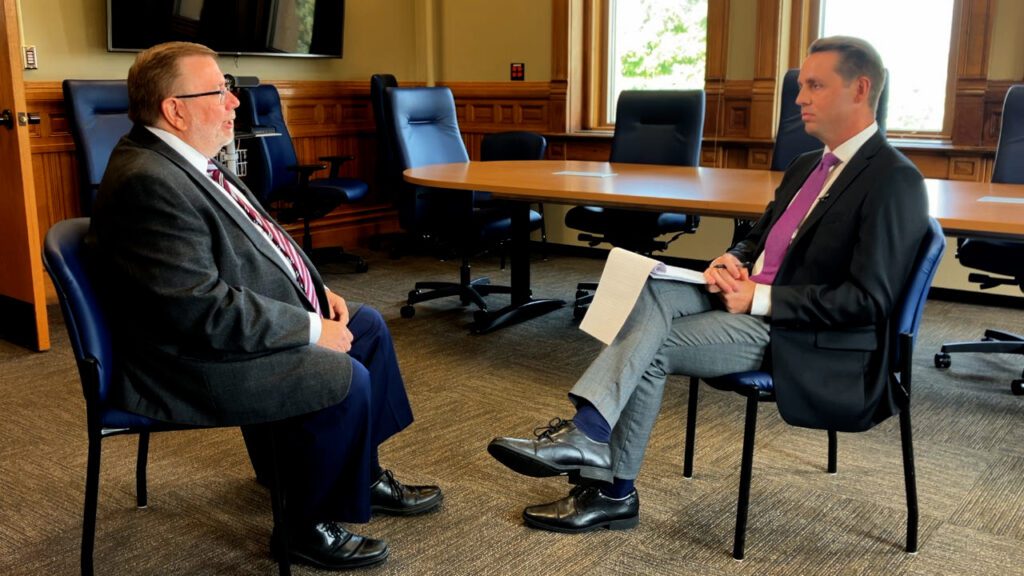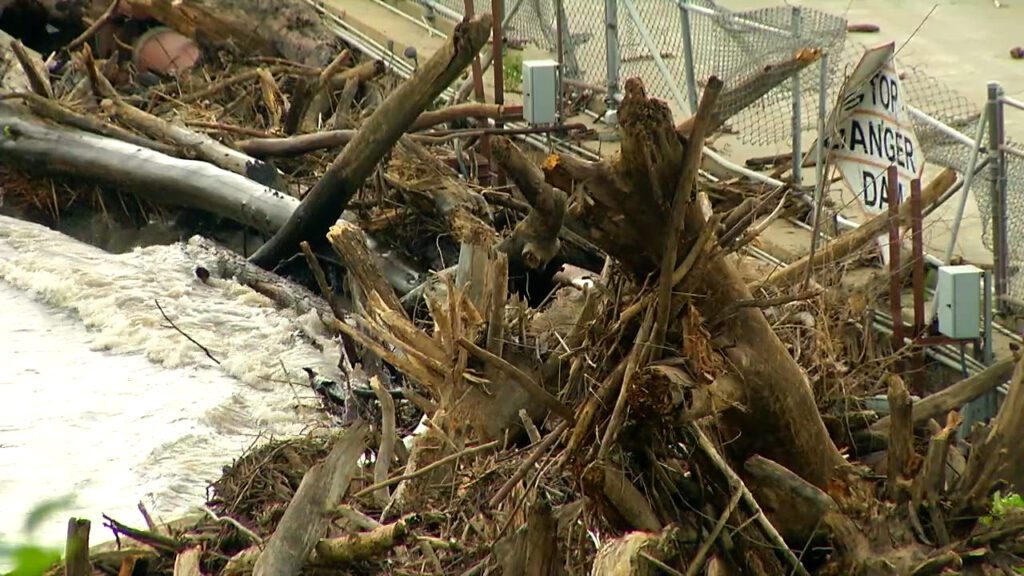Debris clogged Rapidan Dam before the failure. Former workers say it could have been avoided.
Two former workers of the Rapidan Dam with 23 years of combined experience say last month’s partial failure was not just an act of God, insisting instead that the breach could have been prevented.
“It was all completely avoidable,” says Ron Jordan, who operated the Rapidan Dam for 14 years.
His son, Jeremy, worked as a general laborer there for nine years.
“They knew the water was coming. They knew they had debris in those gates and they didn’t do anything,” he said.

The partial failure occurred on Monday, June 24, as the raging Blue Earth River carved a path around the dam, rapidly eroding the bank and wiping away an outbuilding and a home just downstream.
Now more than a month later, county officials are weighing how to proceed after engineers determined the bridge needs to be replaced the dam must be fixed or removed.
But as the bills are starting to come due, the two former workers who spoke exclusively with 5 INVESTIGATES blamed county officials for not doing enough to prevent the failure.

“They did no debris mitigation. They did not lift a finger to get rid of these trees piling up in front of the gates. They’re plugging the gates,” said Ron Jordan, who ran the dam in the ’80s and ’90s when it was still operational and generating electricity.
Ron said one of the key jobs back then and now remains the same: clearing dead trees and other debris that stack up at the dam.
“I dealt with more than what they had out there right now in the past and got rid of it,” he said.
‘Flows were too high’
Blue Earth County said it first noticed a problem on Sunday, June 23, one day before the partial failure.
According to paperwork filed with federal regulators, the county called a contractor on that Sunday but he said “his machine was 5 or more hours away” and “believed flows were too high to safely do the work.”
“It was too late. Why weren’t they calling prior?” Jeremy Jordan told 5 INVESTIGATES. “There was no stopping it by that point, because the water level was already hitting the bottom of the bridge deck.”
Pictures shared with 5 INVESTIGATES show debris stacking up even before Sunday.
In one picture, which metadata shows was taken Friday, June 21, a mass of debris is seen caught on the buoys just upstream at the bridge and some of it is already at the gates.
Occasional checks
Blue Earth County Administrator Bob Meyer said he was not aware of debris at the dam on Friday but acknowledged a collection of debris by the bridge pier.
“We did have staff that were there over the weekend and they did see some debris,” he said in an interview with 5 INVESTIGATES. “We do have a contractor hired to be on site and checking things out occasionally.”

Jessie Anderson, a county spokesperson, said after the interview that the county monitors the dam daily and if there was any debris on Friday “it was very limited and certainly not alarming.”
“We were more focused on monitoring the debris conglomerate caught up on the bridge pier,” she said.
During the interview with Meyer, 5 INVESTIGATES asked if more could have been done to prevent the failure.
“Yes, maybe,” he acknowledged. “But we could have also had a worse outcome.”
RELATED: Rapidan Dam’s concerning history revealed as officials keep an eye on structural integrity
Debris mitigation has proven to be dangerous work. In fact, the county says a month before the failure they had a near-catastrophic event when a backhoe went into a river, but luckily the worker got to safety.
Ron Jordan, the longtime dam operator, agrees it’s dangerous but said there’s no excuse for not having equipment ready.
“It should have been on site, not just on standby,” he said. “I have in the past rented when I ran it. I rented a backhoe, I’d have it sitting there for a day or two days. I knew I was going to need it.”
Costly concerns
The Rapidan Dam has been a thorn in the county’s side for years. Long before the partial failure, leaders toyed with whether to fix the deteriorating dam or remove it — costing taxpayers anywhere from $15 to $82 million.
County commissioners learned on Tuesday that the adjacent bridge will need to be replaced at a cost of at least $18 million.

During a tour of the damage on July 2, Gov. Tim Walz addressed who would pay the bill.
“The cost will be shared by all of us so the burden will not fall on those county commissioners,” he said.
The Jordans now question whether this was the plan all along — waiting on a weather event to take care of the problem.
Meyer, the county administrator, said it was never a thought.
“It really wasn’t,” he said. “There’s so many impacts from that kind of strategy, if you will. So no, we took our responsibility seriously in terms of maintaining the dam.”